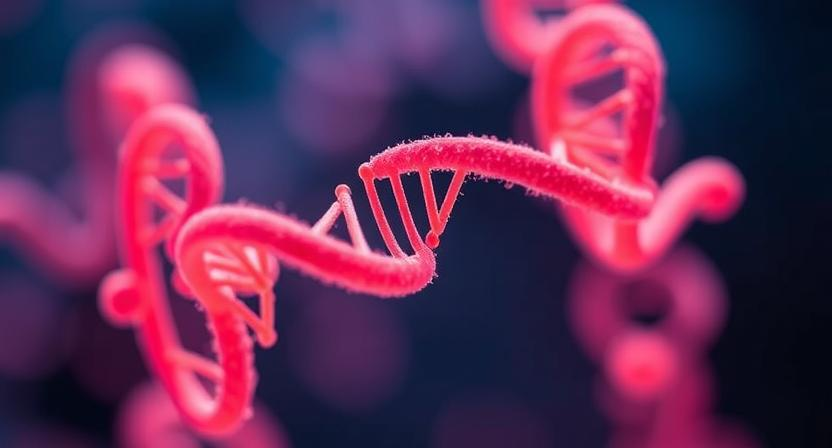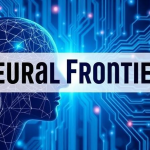In the last decade, CRISPR has revolutionized biotechnology by giving scientists unprecedented control over DNA. Originally known for its ability to cut and modify genes with pinpoint accuracy, CRISPR is now stepping into a new era—one that transforms it from a gene-editing scalpel into a biological programming platform. Welcome to the era of CRISPR 3.0, where we’re not just editing life—we’re programming it.
This evolution is redefining how we treat diseases, develop diagnostics, and build synthetic life systems. With innovations like CRISPR-based diagnostics, epigenome editing, and programmable gene circuits, scientists are turning biology into a software platform where DNA is the code.
From Editing to Programming: A New Paradigm
The first generation of CRISPR was all about cutting DNA to remove or replace faulty genes. This sparked a genetic revolution, offering hope for curing inherited diseases like sickle cell anemia and certain types of blindness. However, as researchers delved deeper, they realized CRISPR could be used for much more than simple edits.
Just like how software evolved from command-line tools to entire platforms and ecosystems, CRISPR is transforming into a flexible framework that can manipulate biological functions without altering the underlying DNA sequence. Instead of merely editing the genome, we can now program how genes behave in real-time, just like updating an app on your phone.
This programmable biology approach opens the door to precise, temporary, and reversible changes—ideal for applications where permanent edits could be risky.
CRISPR-Based Diagnostics: The New Gold Standard
A breakthrough moment for CRISPR 3.0 came during the COVID-19 pandemic. Scientists quickly adapted CRISPR systems like Cas12 and Cas13 to create rapid, low-cost diagnostic tools capable of detecting viral RNA with extreme accuracy.
These systems work like biological sensors. When they find a matching genetic sequence—say, from SARS-CoV-2—they activate a “collateral cleavage” reaction that generates a detectable signal, often as simple as a color change on a test strip.
This innovation isn’t limited to COVID. CRISPR-based diagnostics are now being developed for everything from influenza to cancer biomarkers, offering portable, fast, and highly specific tests that can work even in low-resource environments.
Think of it like a molecular search engine that can scan a sample and instantly detect whether a certain genetic code is present—bringing precision medicine into clinics and homes alike.
Epigenome Editing: Controlling Genes Without Changing DNA
CRISPR’s next leap lies in its ability to modify the epigenome—the chemical tags and structures that control whether genes are turned “on” or “off.” This is like programming the operating system of a cell, without rewriting its software.
By fusing deactivated CRISPR proteins (like dCas9) with epigenetic modifiers, scientists can silence or activate specific genes without cutting the DNA. This opens new possibilities in treating diseases caused by gene misregulation, such as cancer, autoimmune conditions, and neurological disorders.
For example, if a cancer gene is abnormally active, CRISPR can be programmed to suppress its expression temporarily. Conversely, it can switch on protective genes that may have been silenced due to environmental stress or aging.
Because this method doesn’t make permanent changes, it’s seen as a safer alternative to traditional gene editing—ideal for therapies that require precision with minimal risk.
Synthetic Gene Circuits: Biology Meets Engineering
Perhaps the most futuristic application of CRISPR is in building synthetic gene circuits. Inspired by electrical engineering, these circuits are networks of genes designed to perform logical operations inside cells—essentially turning living organisms into programmable machines.
CRISPR is playing a central role in this movement by acting as a biological transistor that controls gene expression based on inputs like light, chemicals, or the presence of other genes.
Imagine a cell that can detect cancerous changes in its environment, process that data through a synthetic gene circuit, and respond by releasing a therapeutic molecule—all autonomously, with no external input.
These smart cells are already being prototyped for use in cancer immunotherapy, metabolic engineering, and even environmental biosensing.
CRISPR in the Cloud: The Fusion of AI and Biology
As CRISPR becomes more programmable, its development is intersecting with other transformative technologies—most notably artificial intelligence (AI) and cloud computing.
AI is now being used to design more efficient CRISPR systems, predict off-target effects, and simulate entire gene networks before testing them in living cells. This dramatically accelerates research while minimizing the risks of trial-and-error experiments.
In some labs, CRISPR editing can even be controlled remotely via cloud platforms. Scientists can upload genetic designs to robotic labs that perform experiments and return data in real-time. It’s synthetic biology as a service—ushering in a new kind of bioengineering workflow that feels more like software development than traditional wet lab science.
Ethical Frontiers: Programming with Responsibility
As with any powerful technology, the expansion of CRISPR into programmable biology comes with ethical challenges. The potential to manipulate genes and cellular behavior so precisely raises concerns about misuse, especially when it comes to human enhancement or ecosystem engineering.
Gene drives, for example—CRISPR systems that can spread genetic traits rapidly through populations—could help eliminate malaria or invasive species, but also risk unpredictable consequences.
In the age of smart genetics, governance frameworks, transparency, and public dialogue are more important than ever. Programming biology should not just be about what we can do, but also what we should do.
The Future: Living Software
CRISPR 3.0 signals a tectonic shift in how we approach biology—not as a static set of instructions, but as a dynamic, programmable system. The boundaries between biotech, data science, and computing are fading, giving rise to a new discipline at the intersection of life and code.
In the near future, we may see programmable cells used to deliver personalized medicine, wearable CRISPR diagnostics that continuously monitor your health, or even DNA-based storage systems that encode data inside living organisms.
The next generation of bioengineers won’t just be biologists—they’ll be coders, designers, and systems thinkers, crafting living solutions to some of humanity’s most complex problems.
What was once science fiction is fast becoming our scientific reality. As CRISPR evolves into a true platform for biological programming, we’re not just changing the world—we’re rewriting its code.






Leave a Reply